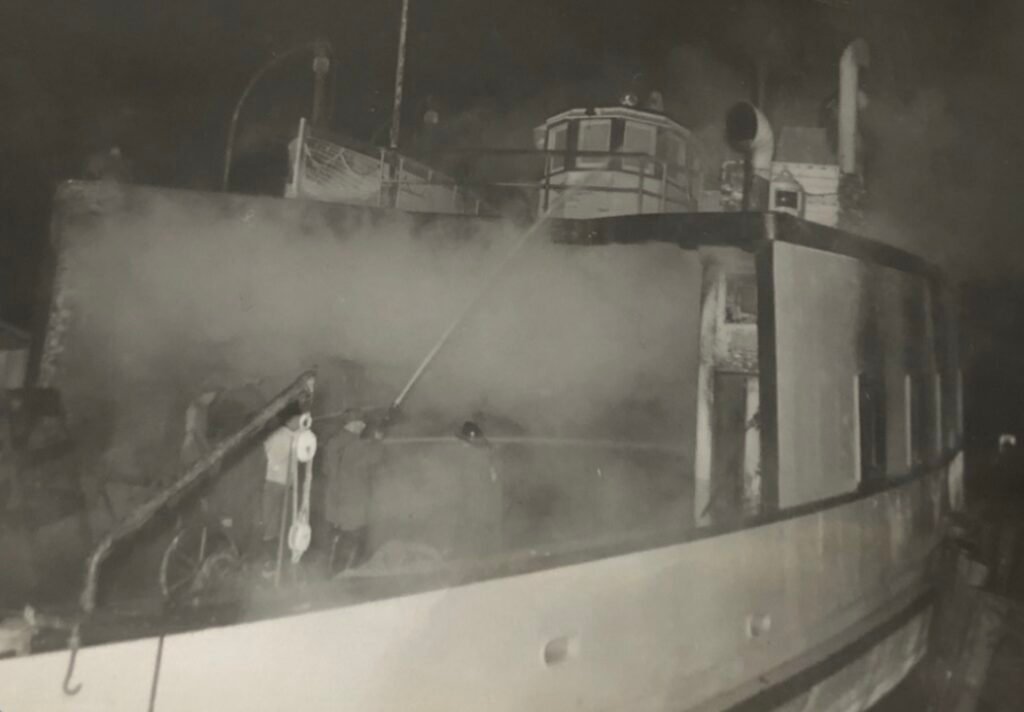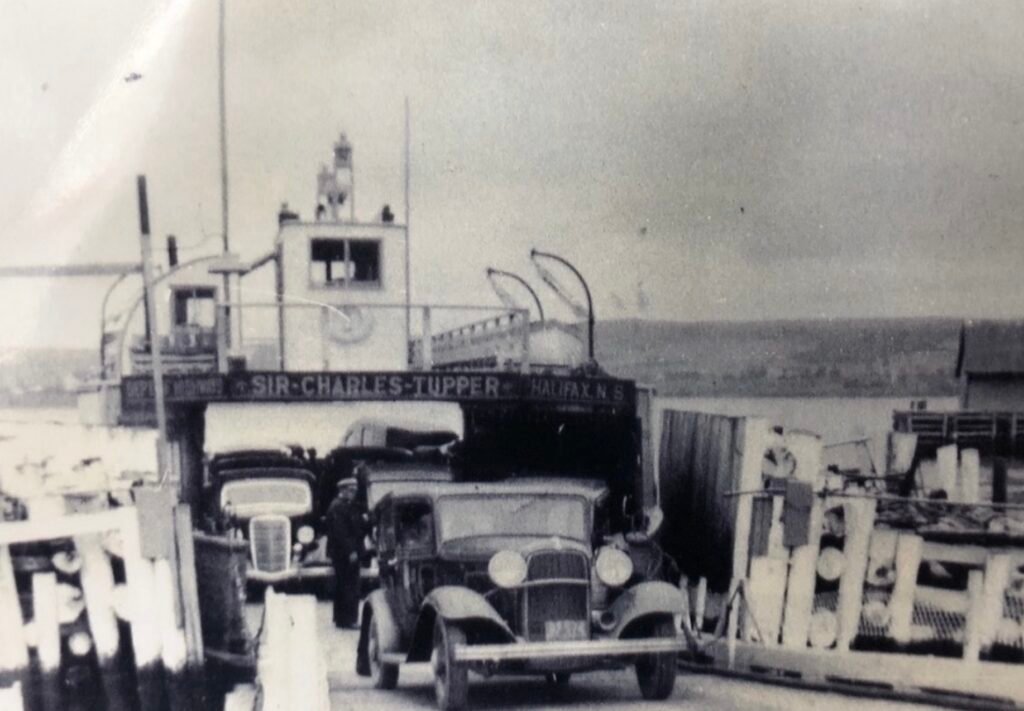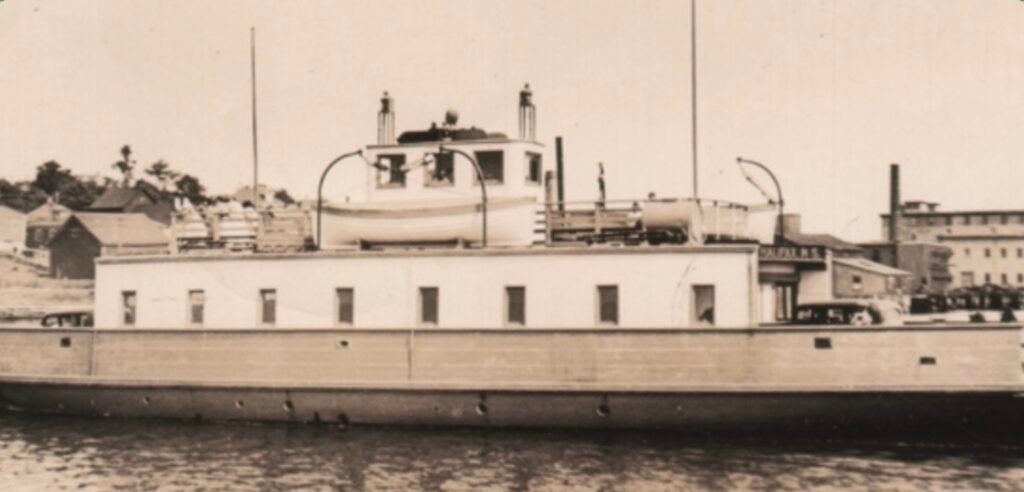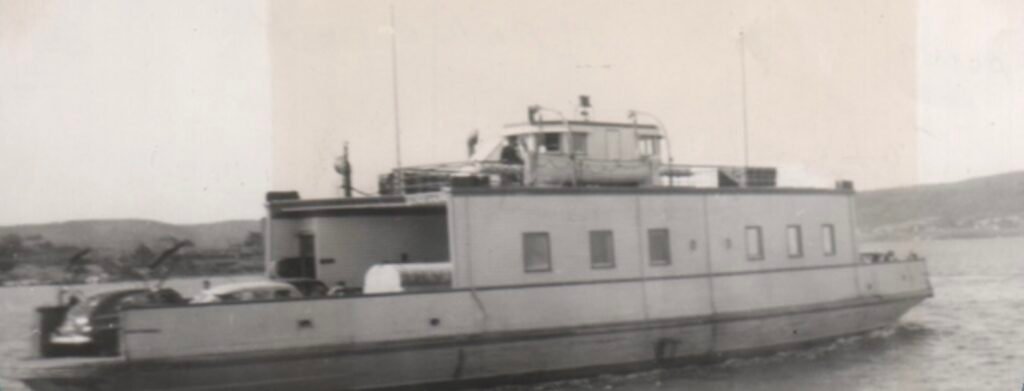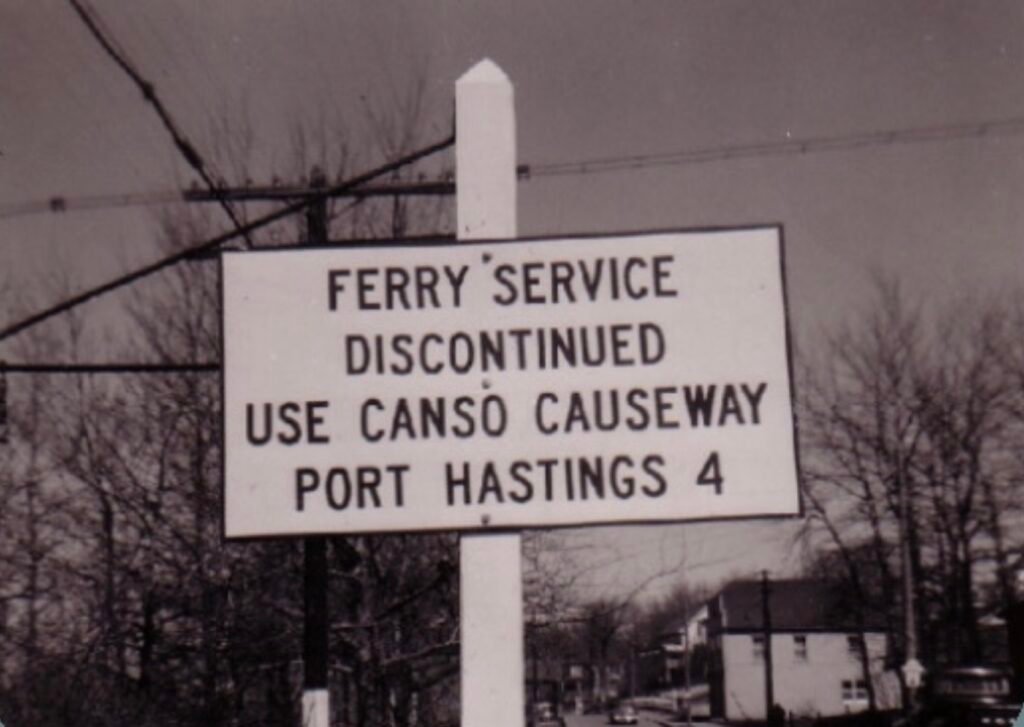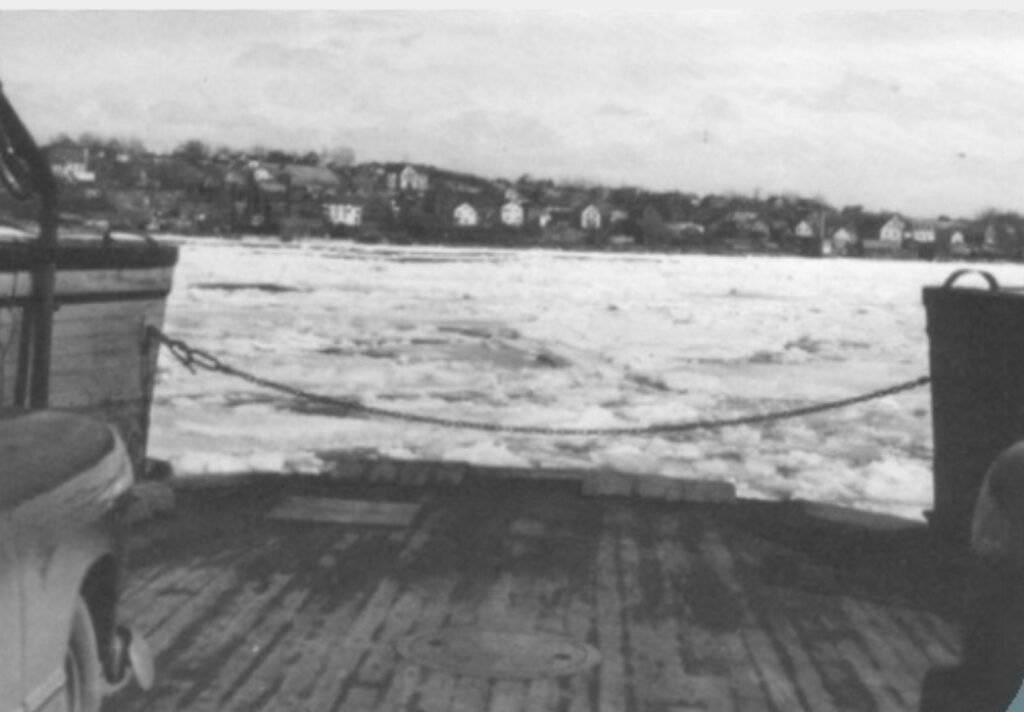Strait of Canso Car Ferries
The Beginning…
The earliest crossings of the Strait of Canso were made by Mi’kmaq couriers who were paid 6 pounds to travel from Sydney to Halifax with letters.The earliest documented “regular” ferry service between Aulds Cove and Plaister Cove (now known as Port Hastings) began in 1819, for horses, cattle and walking passengers.This was documented in a petition by Hugh MacMillan in 1829 to the provincial government.The MacMillan family of Port Hawkesbury provided ferry service for over 80 years between mainland Nova Scotia and Cape Breton Island.
Increased Traffic
With the end of World War II in 1945, a postwar economic boom emerged. Consumers were eager to spend money and the need for transportation increased.With this, many households purchased automobiles for personal use, with new car sales quadrupling between 1945 and 1955.The rise in automobile usage increased traffic at the ferry terminals, causing long lines of cars that often had to wait for several hours to cross the Strait of Canso.The largest line-up recorded was on Labour Day of 1954 where at one point, 154 vehicles were lined up from the Port Hawkesbury ferry terminal to Embrees Island.
One-Car Ferries
Barges that could accommodate one car were the only way to cross the Strait before the advent of motorized car ferries.Some of the early Strait of Canso Ferrymen:
Hugh MacMillanRichard CarterAlexander AuldJohn CarterAndrew SharpThomas MartinJames HadleyJohn ForrestJohn McNeilArchibald MacLeanAlexander McGuireCharles Embree
The Loss of the John Cabot
In 1952, the John Cabot was hit by a freighter during its crossing and was beached, patched, refloated and repaired at the Point Tupper Marine Railway facility.On May 2nd, 1955, a fire gutted the John Cabot while it was undergoing a routine refit.The John Cabot was later repaired at the Point Tupper Marine Railway, but not before its loss caused an early opening of the Canso Causeway on May 20th, 1955, ending all ferry service across the Strait of Canso.
The First Multi-Vehicle Car Ferries
The Edith C. Walker – Ran from 1923 to 1925 and was the first steam powered car ferry to operate in the Strait of Canso.The Ponte de Canseau – Began operation in 1926 and was the first government-run car ferry in the Strait of Canso that could carry 10 average sized vehicles.The Sir Charles Tupper – Was brought into service in 1928 and could carry up to 15 average sized vehicles.From 1934 to 1940, there were no car ferries operating in the winter.Cars that wanted to cross in the winter had to be put on a railway flat car and then ferried across by the Canadian National Railway train ferry.
The Last Car Ferries
The George H. Murray was in operation from 1940 to 1955. (photo above)At this time, a new ferry dock was constructed in Point Tupper for when ice made the Port Hawkesbury Harbour not suitable for docking.The John Cabot ran from 1947 to 1955. (photo below)The tolls for the John Cabot and George H. Murray were $1.00 for a car and 15¢ for a passenger.
The last day both the John Cabot and George H. Murray ferries ran together was April 11th 1955, which was the Easter Monday holiday. Both were needed to handle the heavy flow of traffic.
Challenges for ferries crossing the Strait of Canso
Strong currentsHuge fields of iceStrong windsThick fogLong lineupsChanging tidesLINK TO FACEBOOK VIDEO:

Strait of Canso Car Ferries
- Unknown Artist
- Strait Area Museum
- Photography
- laminated panel
- Strait Area Museum
laminated panel depicting the Strait of Canso Car Ferries


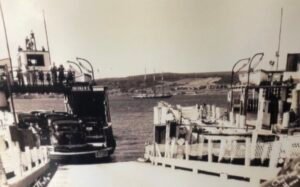
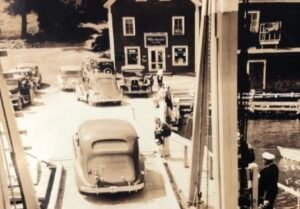
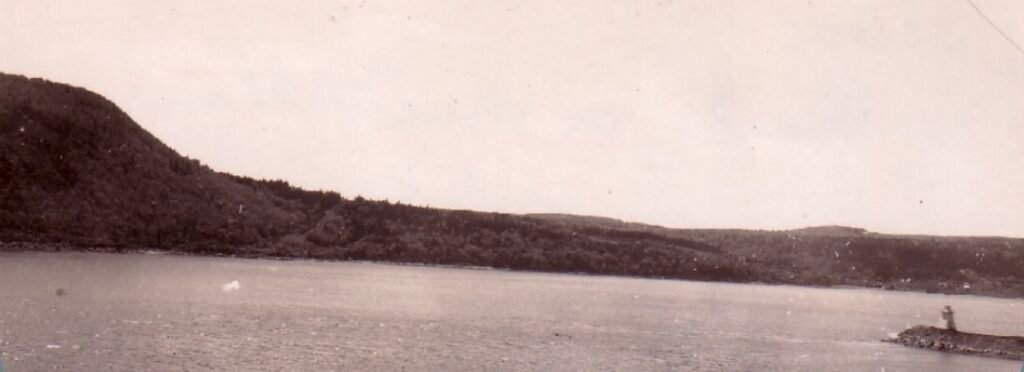
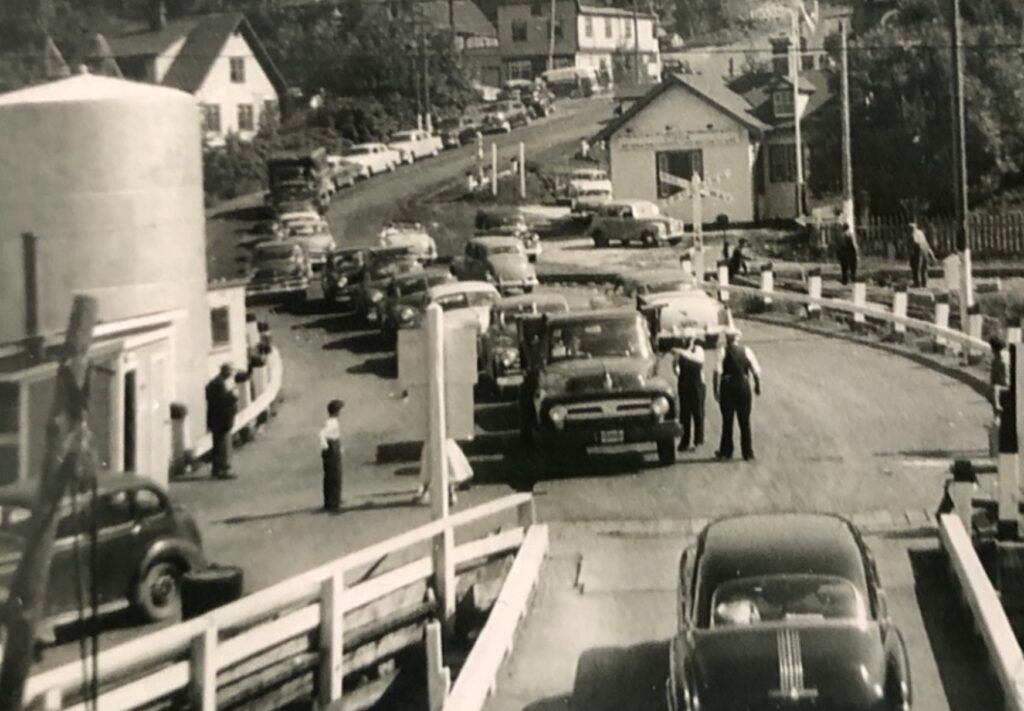
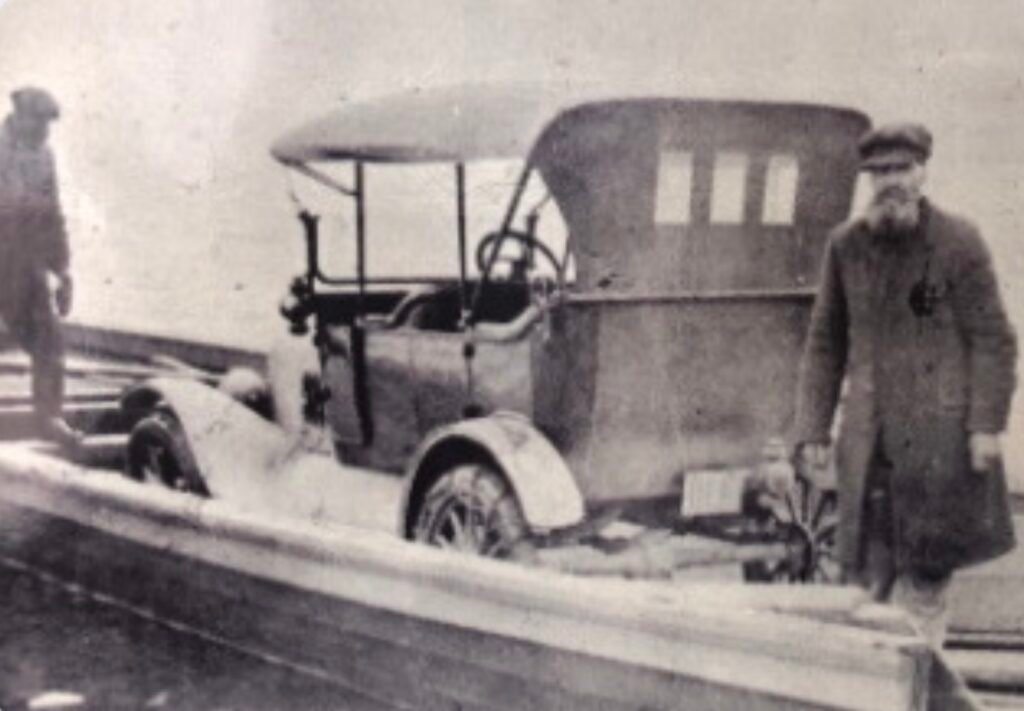
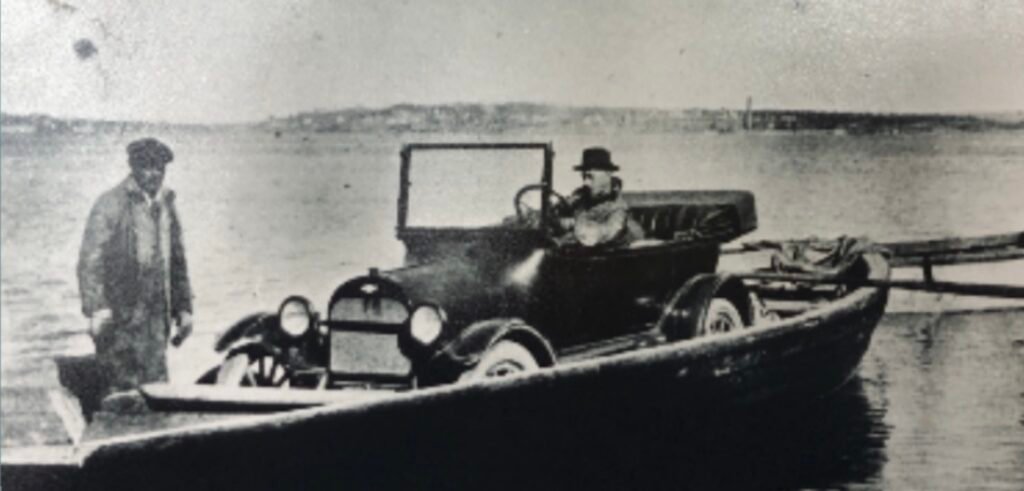
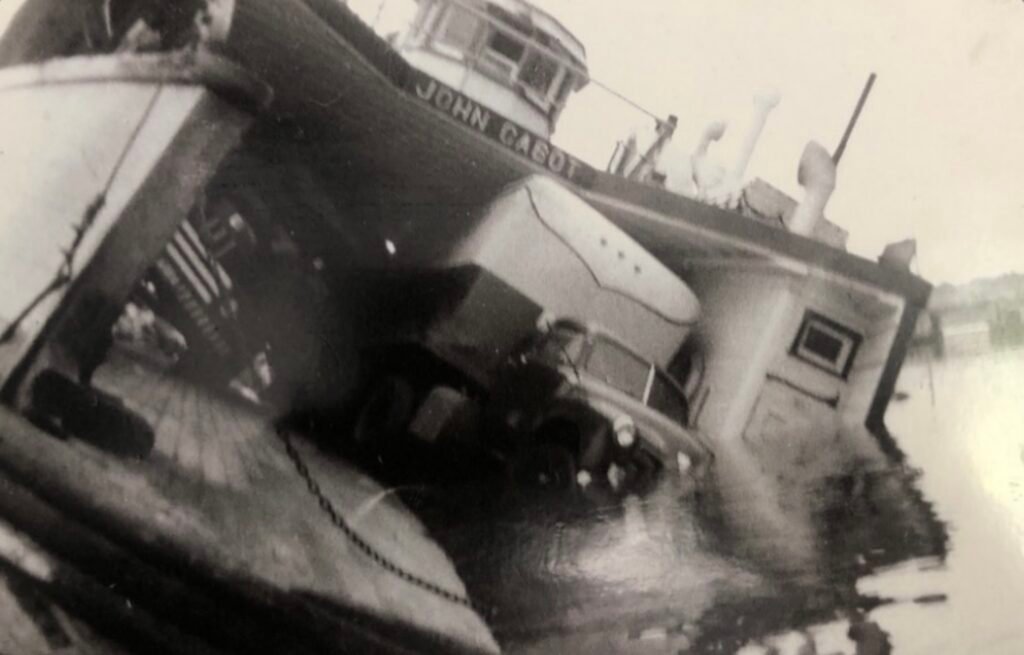 The Loss of the John Cabot
The Loss of the John Cabot